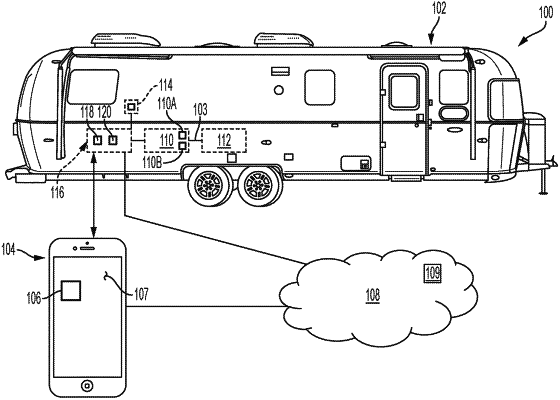| CPC B60R 16/0231 (2013.01) [B60H 1/00828 (2013.01); B60P 3/343 (2013.01); B60R 25/01 (2013.01); B60R 25/24 (2013.01); E04H 15/08 (2013.01); H04L 67/12 (2013.01); G16Y 10/75 (2020.01); G16Y 20/10 (2020.01); G16Y 40/30 (2020.01); H04L 12/28 (2013.01)] | 10 Claims |

|
1. A control system, the control system comprising:
a smart vehicle, the smart vehicle comprising an Internet of Things (IoT) controller and one or more smart vehicle features communicatively coupled to the IoT controller;
a smart mobile device comprising a software application tool, the smart mobile device including a user interface and comprising a processor, the software application tool paired with the IoT controller; and
a non-transitory computer readable storage communicatively coupled to the processor, the non-transitory computer readable storage comprising instructions that, when executed by the processor, cause the control system to
generate, by the IoT controller, environmental inputs with respect to the smart vehicle,
receive, by the software application tool, the environmental inputs with respect to the smart vehicle,
apply control logic based on the environmental inputs and the one or more smart vehicle features, and
control operation via the user interface of the software application tool of at least one smart vehicle feature of the one or more smart vehicle features based on the applied control logic and the environmental inputs;
wherein the control logic comprises logic to
determine as a line-of-sight (LOS) determination whether the at least one smart vehicle feature is within a LOS of a user of the smart mobile device, and
apply the control logic based on the environmental inputs, the one or more smart vehicle features, and the LOS determination; and
the instructions to control operation of the at least one smart vehicle feature comprise instructions to restrict operation of the at least one smart vehicle feature when the LOS determination is indicative that the at least one smart vehicle feature is not within the LOS of the user of the smart mobile device.
|